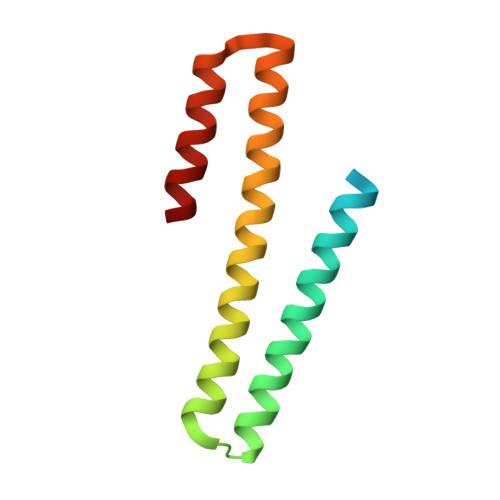A tight tunable range for Ni(II) sensing and buffering in cells.
Foster, A.W., Pernil, R., Patterson, C.J., Scott, A.J., Palsson, L.O., Pal, R., Cummins, I., Chivers, P.T., Pohl, E., Robinson, N.J.(2017) Nat Chem Biol 13: 409-414
- PubMed: 28166209
- DOI: https://doi.org/10.1038/nchembio.2310
- Primary Citation of Related Structures:
5FMN - PubMed Abstract:
The metal affinities of metal-sensing transcriptional regulators co-vary with cellular metal concentrations over more than 12 orders of magnitude. To understand the cause of this relationship, we determined the structure of the Ni(II) sensor InrS and then created cyanobacteria (Synechocystis PCC 6803) in which transcription of genes encoding a Ni(II) exporter and a Ni(II) importer were controlled by InrS variants with weaker Ni(II) affinities. Variant strains were sensitive to elevated nickel and contained more nickel, but the increase was small compared with the change in Ni(II) affinity. All of the variant sensors retained the allosteric mechanism that inhibits DNA binding following metal binding, but a response to nickel in vivo was observed only when the sensitivity was set to respond in a relatively narrow (less than two orders of magnitude) range of nickel concentrations. Thus, the Ni(II) affinity of InrS is attuned to cellular metal concentrations rather than the converse.
- Department of Biosciences, Durham University, DH1 3LE, UK.
Organizational Affiliation:
















